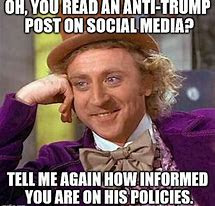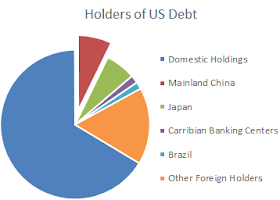 |
| Trump Was A Womanizer But does America Care |
Back then the story surrounded Trump's attorney Michael Cohen now facing three years in prison and the parent company of the National Enquirer, American Media Inc. (AMI), admitting responsibility for its role in a $150,000 "catch-and-kill" hush money payment to a former Playboy Playmate, Karen McDougal; She alleged that she had an affair with Donald Trump in 2006. Under a non-prosecution agreement, AMI admitted that it refused to publish Karen McDougal's claim to prevent it from influencing the election by damaging Trump.
This episode of the "dump Trump" lasted a short time with the never-ending Washington sideshow ramping up as the mainstream media kept us a "breast" of every salacious detail. They even provided us with eye-candy suggestive photos of all lewd, crude, and improper conduct our current Pervert and Chief may have touched on. With everyone all a tither with speculation, this gave lobbyist even more time to go about their task of writing legislation giving those they represent an edge. As for us taxpayers who sent our representatives to Washington at great expense were forced to view this as another excuse to add to America's dysfunctional political culture.
 |
| Is This About Trump's Policies Or The Man? |
All this is getting long in the tooth and fatigue is setting in. The current impeachment move is centered around a whistle-blower complaint claiming President Donald Trump broke the law during a phone call with the Ukrainian president where he threatened to withhold military in exchange for a political favor. The complaint is riddled with repeated references to what anonymous officials allegedly told the complainant. These include things such as: “I have received information from multiple U.S. Government officials,” “officials have informed me,” “officials with direct knowledge of the call informed me,” “I was told by White House officials,” “the officials I spoke with,” “I was told that a State Department official,” and more.
This has driven the President's enemies into a feeding frenzy. Some are even seeking to expand this investigation to include the private talks between Trump and leaders of other nations. These may or may not be crimes significant enough to merit Trump's ouster unless expanded into the world of technicalities and lies. This is a place where speculation, who knew what, when, or who said what often rule the day. Again, this brings us back to the question of whether Trump is guilty and does America really care? Politics seems to be the driver as to whether this is "impeachable behavior" and if those in Washington should begin to move in that direction. The standard for removal from office on impeachment is seen as the conviction of, treason, bribery, or other high crimes and misdemeanors.
The truth is even if Trump is cast out of Washington little will change and our problems will remain. Ironically, the latest impeachment talk centering around new territory and a bit of skulduggery. Sean Davis of The Federalist reports that between May 2018 and August 2019, the intelligence community secretly eliminated a requirement that whistle-blowers provide direct, first-hand knowledge of alleged wrongdoings. Without this major change in the law the current complaint would never have seen the light of day and been dismissed as sour grapes or unsubstantiated speculation. This raises substantial questions about the intelligence community’s behavior and its role in this.
Circling back around as to how we got here, A big part of the problem is that Hilary Clinton the Democratic presidential candidate that ran against Trump was such a tarnished figure many Americans were left feeling they were forced to chose between the least of two evils. Since these allegations have damaged Joe Biden by shedding a bit of light upon his past this has opened up the Democratic Presidential race. Even more mind-blowing is this has created talk about Hilary Clinton again running for President.
When it comes to lies, and lying to the people, both political parties should hang their heads in shame. America is not alone when it comes to the rich history of politicians bending the truth, breaking pledges or committing outright deceit. It is almost as if honesty is in the eye of the beholder and this is where terms like alternative facts come to mind. Currently, a full-scale propaganda war rages with many Americans hellbent on convincing the rest of us what is really going on. Two things remain clear, they are that this contentious debate continues to stir the waters and polarize the nation while creating some rather strange alliances.
As in the case of Russia's meddling in the election or whether Trump colluded with the Russians, by now most people seem to have made up their mind. People are either outraged, simply concerned or take the attitude this is all a big nothing burger or much ado about nothing. Still, for the lovers of gridlock, all this will go a long way towards allowing Washington not to concentrate on important legislation and reforms or trimming our soaring national deficit. It is a bit reminiscent of the saying, "A bad day fishing is better than a good day working" and guarantees we will see more of the same political grandstanding rather than politicians focusing on crucial issues of the day.

















